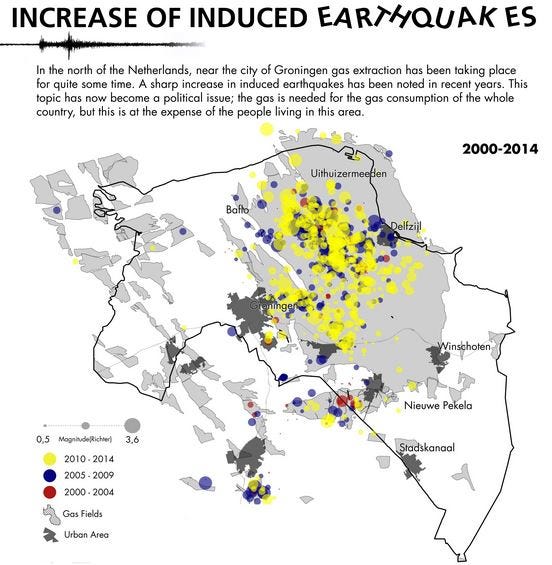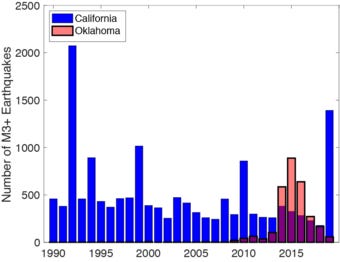"The earth has music for those who listen." – George Santayana
In the late 20th and early 21st centuries, the Dutch faced an unexpected problem: earthquakes in a country not known for seismic activity. These quakes were linked to one of the largest natural gas fields in the world — the Groningen gas field, located in northern Netherlands. For decades, this field had been the backbone of the Dutch energy supply, providing natural gas not just to the Netherlands but across Europe. However, the extraction of this vast natural gas resource led to something no one anticipated — a series of earthquakes that rattled homes, damaged infrastructure, and threatened the livelihoods of many.
By the time the government acknowledged the full scale of the issue, a series of legal battles, political ramifications, and public outcry led to plans for a gradual phase-out of gas extraction in the Groningen field. In October 2022, the Dutch government officially ceased gas production at the field due to the risks posed by the induced earthquakes. Although the closure of the field was accelerated, the earthquakes had not resulted in anything close to a catastrophe on the scale of more traditional seismic zones, such as those in California or Japan.
Fast forward a few years, and the U.S. faces its own seismic concerns tied to energy extraction, this time from the booming shale fields that have transformed the American energy landscape. The question remains: Should we be concerned about these quakes, or are they just another ripple in the ever-changing dynamics of energy production?
America’s shale revolution has reshaped global energy markets. Over the past two decades, hydraulic fracturing (fracking) and horizontal drilling technologies have unlocked vast reserves of oil and natural gas, primarily in areas like the Permian Basin, Marcellus Shale, and Bakken Formation. From 2005 to 2020, U.S. natural gas production more than doubled, reaching over 90 billion cubic feet per day (Bcf/d), with shale gas accounting for a significant portion of that increase.
The U.S. shale boom has brought economic prosperity, energy independence, and a reduction in greenhouse gas emissions (thanks to natural gas replacing coal in power generation), but it has also raised concerns about induced seismicity — earthquakes triggered by human activity. Shale oil and gas operations involve high-pressure fluid injection into deep underground rock formations, which can induce shifts along pre-existing faults and fractures.
In 2014, the U.S. Geological Survey (USGS) issued a report that sent shockwaves through the public. It showed that areas like Oklahoma, Texas, and parts of Ohio were experiencing unprecedented levels of seismic activity, attributed largely to the underground injection of wastewater associated with oil and gas extraction. The statistics were eye-opening:
Keep reading with a 7-day free trial
Subscribe to The Monetary Skeptic to keep reading this post and get 7 days of free access to the full post archives.





